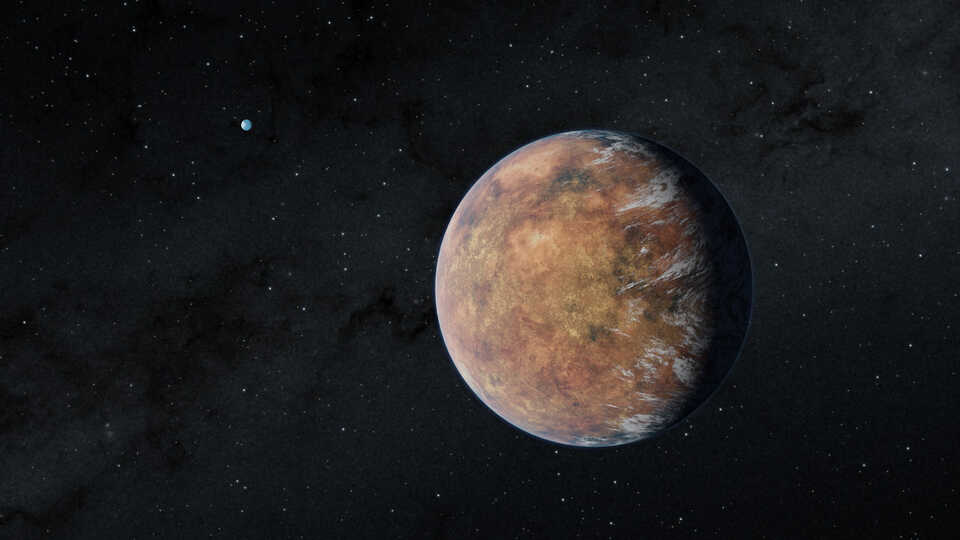Universe Update
New Exoplanet Discoveries and New Ways to Find Them

Credit: NASA/JPL-Caltech/Robert Hurt
The 241st meeting of the American Astronomical Society (AAS) continued in Seattle today, with a variety of presentations on anything but “everything under the sun.” Instead, of course, it’s everything in the Universe! In yesterday’s article, I shared stories about JWST and its observations of distant galaxies, but today, it seems worth focusing on exoplanets.
Exoplanets—planets that orbit stars other than the Sun—have become an exceedingly fertile research area for modern astronomers. On the one hand, new planets are being discovered all the time, but new techniques and opportunities are also opening up to discover planets very different from the ones we’ve discovered so far. And with thousands upon thousands of planets, we can both characterize them statistically—and ask new questions about the nature of these diverse worlds.
In her plenary talk entitled “Towards an Exoplanet Demographics Ladder: The Emerging Picture of Planet Populations,” Jessie Christiansen from the NASA Exoplanet Science Institute told the audience, “We are out of the stamp collection phase…” Instead, she described “putting together the bigger picture” about how our methods for finding exoplanets biases our results.
A critical question (at least for people who are interested in thinking about the potential for life on other worlds) is what fraction of stars could host an Earth-sized planet. Christiansen said she wouldn’t put the number in her slide deck, but she was willing to express aloud that it’s likely between 10% and 50%. That seems like a big range—and it is—but that’s indicative of how much we have to learn about these planets around other stars.
Speaking of Earth-sized planets…
In a press conference today, Emily Gilbert from NASA’s Jet Propulsion Laboratory announced the discovery of a second Earth-sized planet in the TOI-700 system. The Transiting Exoplanet Survey Satellite (TESS) previously identified three planets in orbit around TOI-700, creatively named (drumroll please) TOI-700b, TOI-700c, and TOI-700d.
(A note on naming. The “TOI” stands for “TESS Object of Interest,” so TOI-700 is the 700th source identified as an interesting star for further observation. The letter that follows “TOI-700” refers to the planet in order of discovery, and since all three planets were announced simultaneously two years ago, b, c, and d lie at increasing distances from the parent star, which is technically TOI-700a. I apologize on behalf of all astronomers.)
And the latest find? Yep, TOI-700e! Although it lies in between c and d.
Sigh.
Anyway, this fascinating world orbits its parent star in less than 28 days—a little close for comfort, receiving about 30% more energy from TOI-700 than Earth receives from the Sun, but still within the star’s “optimistic habitable zone.” Its diameter is about 95% that of Earth’s, and it’s likely a rocky planet.
Planet TOI-700d is a bit farther from the star, safely inside the habitable zone, which makes the TOI-700 system an exciting place with two Earth-sized in the star’s habitable zone (optimistic or otherwise).
This discovery may fall a bit into Christiansen’s “stamp collecting” mode, but it’s also an early result from TESS’s continuing mission, which should produce many more exciting discoveries in years to come.
And although TESS was designed for planet searches, more discoveries could be coming soon from a very different space-based mission.
Gaia has spent nearly a decade making precise measurements of nearly two billion stars—the foundation of an unprecedented three-dimensional map! Its remarkable accuracy can detect the wobbly motion of a star influenced by the gravity of a planet in orbit around it.
And that’s exactly what motivated a team from the United Kingdom to look for a planet around the star HD206893.
Sasha Hinkley from the University of Exeter announced the discovery of the very non-Earth-like world HD206893c. Hinkley and his team inferred the presence of the planet by studying Gaia’s measurements of the motion of its parent star across the sky.
As Gaia continues to gather data, astronomers will be able to “look for anomalies in motion across the sky,” said Hinkley. “It’s going to take a little while… quite a bit of work and analysis to understand which of these stars we actually can map out a full orbit and which just show a proper motion anomaly across the sky.” Many will be “close enough, bright enough, and young enough” for follow-up observations, he said.
(A word about HD206893c’s planetary status. It’s awfully massive for a planet, but it also appears smaller than a brown dwarf. A reminder that, however much humans like to classify objects using terms like “star” or “planet,” nature has a way of defying categorization. Hinkley noted that astronomers struggle over these terms, and HD206893c is an unusual object. For example, “it’s below the deuterium-burning limit, even though it is burning deuterium,” he said, underscoring the challenge of classification.)
Finally, Rob Zellem from NASA’s Jet Propulsion Laboratory announced Exoplanet Watch, a smartphone app that will allow you to help find planets around other stars! You can sift through existing collections of data or (if you have a telescope of your own) make observations to contribute to a rich database that can help save time on large, expensive observatories.
A prototype Exoplanet Watch project actually saved two hours of JWST time! Observations of the exoplanet HD80606b by 20 volunteer astronomers refined our understanding of the planet’s transit and eclipse timing, so each JWST observation (scheduled for later this year) will be reduced from tens of minutes to a few minutes.
The exoplanet renaissance will continue for some time, with plenty of new exoplanet discoveries to come—and new techniques to help us find them